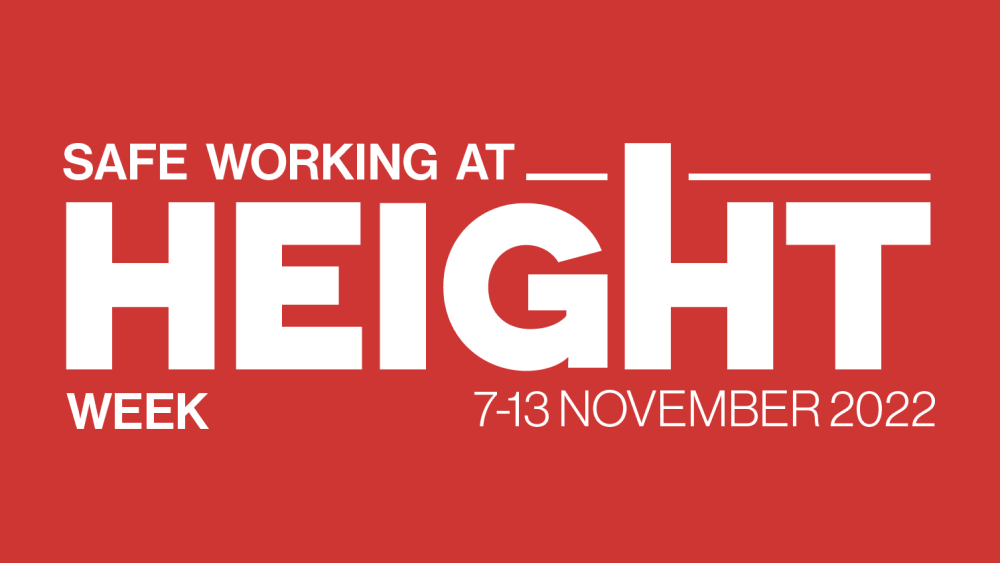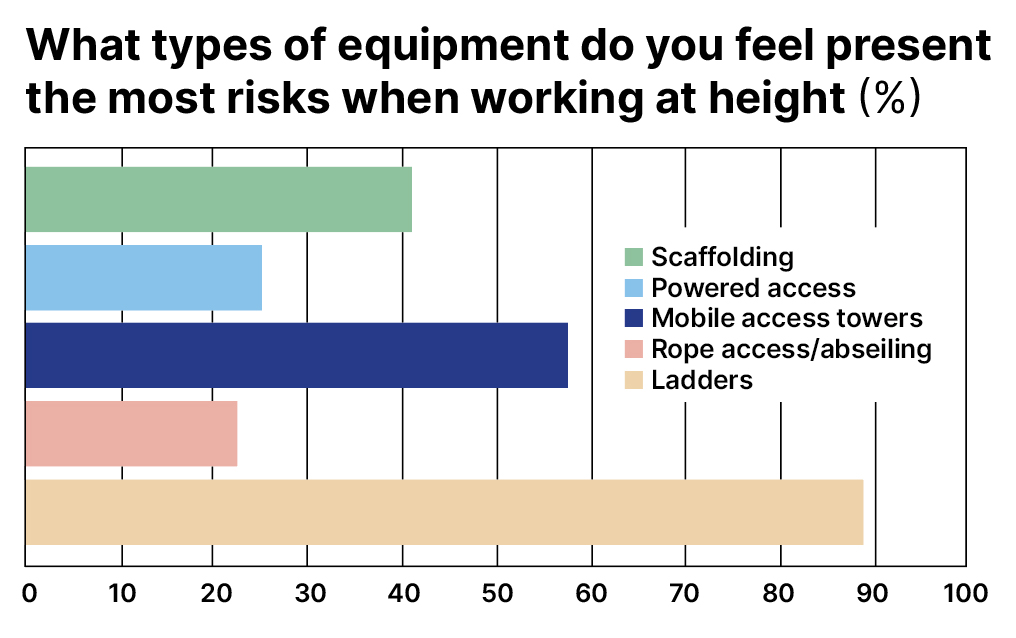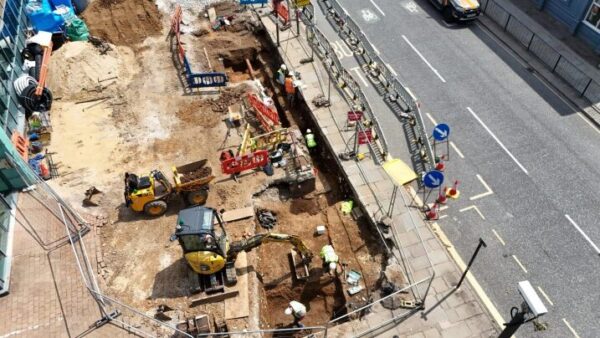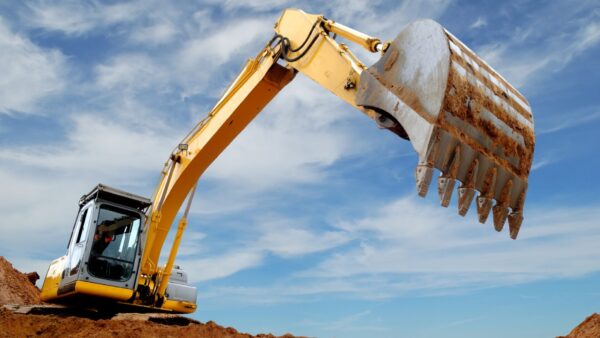
CM’s survey for Safe Working At Height Week (7-13 November) finds widespread safety concerns about working at height. Neil Gerrard reports.
Nearly 60% of construction professionals think the industry’s workforce does not fully understand the risks involved with working at height.

That’s according to a new survey by CM for Safe Working at Height Week (7-13 November). The campaign brings together professional bodies, trade organisations and campaign groups to highlight the key issues surrounding current practice and future developments in safe working at height.
An emphatic 98.6% of the 200 construction professionals surveyed agreed that working at height is still a significant safety risk in the sector.
When it comes to the types of equipment that they feel present the most risks, ladders were highlighted (88.8% of respondents) as posing one of the biggest dangers. That was followed by mobile access towers (56.6%) and scaffolding (41.3%).

Meanwhile, respondents identified three main ways to reduce risks and accidents while working at height. Specifying access equipment that is appropriate to the task and in good working order was the most popular route (selected by 79%). That was followed closely by better work planning to reduce work at height, such as the use of modular building (76.2%), and proper use of fall arrest, edge protection and other safety systems (74.1%).
Comments from CM readers:
“Increase frequency of refresher courses to maintain awareness.”
“There is still a human factor with all tasks. We need to ensure our operatives understand the risks fully and implement safety measures.”
“Not enough planning by suppliers and subcontractors takes place. Supervisors do not have time and are ill equipped to make a judgement on the type of equipment required. This results in equipment not suited for the task.”
“All MEWPS should have a lift plan before being put into use. This will ensure that the right type is used.”
“It is unplanned work that presents a significant risk, as well as complacency or reduced standards in the race to finish projects.”
“Avoidance of work at height is often not considered at the design stage because the use of readily available access equipment is often the cheaper option, so preferred by client.”
Comments
Comments are closed.












The CONIAC Work at Height Group would like to join this campaign. Please contact Paul Reeve at ECA (chair of this group) – email as provided.
This is a great topic. Stakeholders should consider designs that would eliminate all the possibilities of working at heights at the drawing board/room.
We run training courses specifically on Management of WaH for Construction Managers at several of the major contractors.
Generally, in our experience, the site management teams are pretty good, but more focus is definitely required at design and procurement!